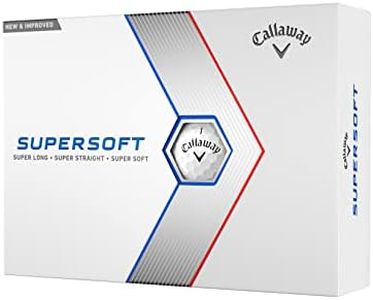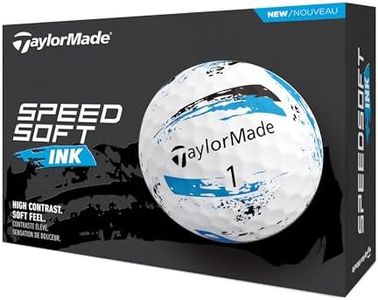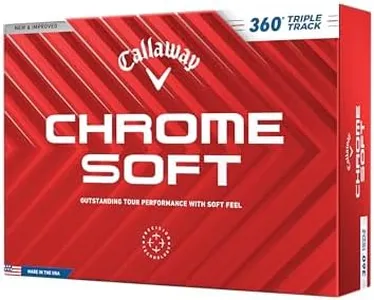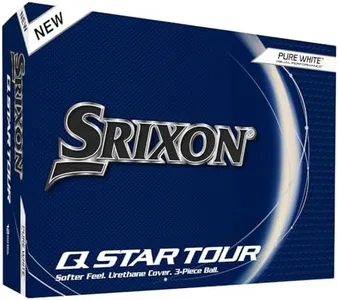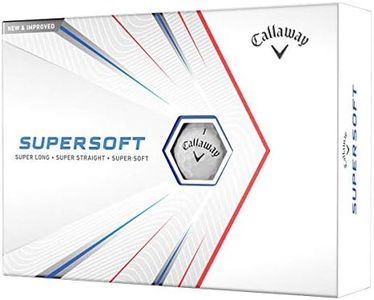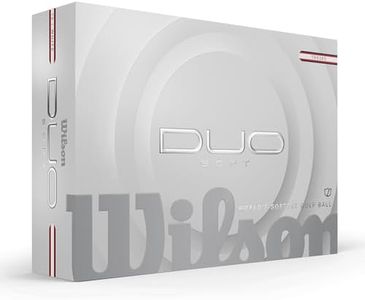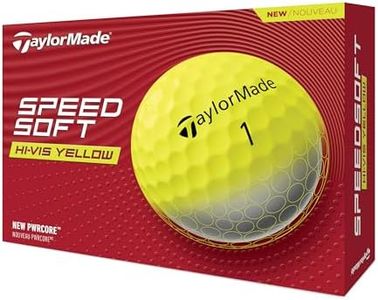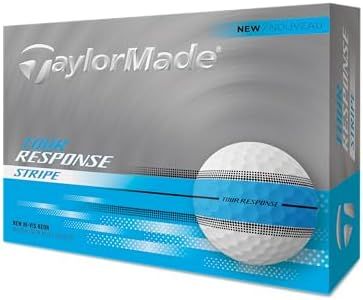We Use CookiesWe use cookies to enhance the security, performance,
functionality and for analytical and promotional activities. By continuing to browse this site you
are agreeing to our privacy policy
10 Best Golf Balls For Beginners
From leading brands and best sellers available on the web.Buying Guide for the Best Golf Balls For Beginners
Choosing the right golf balls as a beginner can make learning the game more enjoyable and even help improve your performance more quickly. Golf balls may all look similar, but they have important differences that affect how far they travel, how much they spin, and how they feel when you hit them. For beginners, it is best to focus on features that make the game easier, rather than trying to mimic what professionals use. Understanding what matters most—like feel, distance, and durability—will help you find a golf ball that supports your learning and enjoyment as you build your skills.CompressionCompression refers to how much a golf ball squashes against the clubface when struck, and it affects the ball’s distance and feel. A lower compression number means the ball is softer, making it easier to compress, which is great for players with slower swing speeds—typically beginners. Higher compression balls are firmer and usually suited for experienced players with fast swings. If you are just starting out, look for balls with low to medium compression, as these will help you achieve better distance even if your swing speed isn’t very high yet.
Cover MaterialGolf ball covers are typically made of either ionomer or urethane. Ionomer covers are firmer, very durable, and generally provide less spin, making them good for beginners who may miss the sweet spot more often and are looking to avoid unwanted side spin. Urethane covers, on the other hand, give more spin and a softer feel, but are best for advanced techniques and control. Beginners should go for ionomer-covered balls, as they last longer and are more forgiving.
Number of Layers (Pieces)Golf balls are made up of several layers, and this is called the ball’s construction. Two-piece balls are the most basic, featuring a solid core and a simple outer cover, designed for maximum distance and durability. These are ideal for beginners because they are less expensive and help reduce unwanted spin, making your shots straighter. Three-piece or multi-layer balls offer more control and spin for advanced players, but as a beginner, sticking with two-piece balls makes the game easier as you learn the basics.
Spin RateSpin rate is about how much the ball rotates in the air after being struck. Lower-spin balls are designed to go straighter and reduce hooks or slices—common problems for beginners learning swing techniques. Higher-spin balls allow for more control and shot-shaping, but these are better suited for experienced players. Beginners will benefit most from using low-spin golf balls, as these make the game less frustrating and help shots travel straighter.
FeelThe ‘feel’ of a golf ball is about how it responds when you hit it—whether it feels soft or firm. A softer-feeling ball is generally more comfortable for beginners, especially when putting or chipping around the green. This is often connected to the ball’s compression and cover material, but if you’re new, try a couple of options and see what feels best when you play; a ball that feels nice to hit can make you more confident as you learn.
DurabilityDurability refers to how well the ball stands up to repeated hits, rough surfaces, and accidental contact with hard objects. For beginners who are likely to hit the ball into trees, cart paths, or other hazards, choosing a ball that is made to last is important. Durable balls are typically those with harder cover materials, like ionomer. This makes sure you won’t need to replace balls as often, letting you focus on improving your game.
